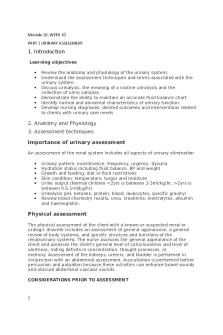Infringement Notes (Part 1) PDF

| Title | Infringement Notes (Part 1) |
|---|---|
| Author | Choong Qi Ng |
| Course | Copyright and Trademark Law |
| Institution | University of Essex |
| Pages | 3 |
| File Size | 61.8 KB |
| File Type | |
| Total Downloads | 69 |
| Total Views | 156 |
Summary
Notes on the topic of infringement, please refer to Part 2 for the entire topic....
Description
Kinds of Copyright Infringement
Primary Infringement
S.16 of the CDPA.
Targets direct infringing acts.
Strict liability applies here; ignorance is not a defense.
Primary infringement occurs whenever a. An activity falls within one of the copyright owners’ exclusive rights (the restricted act is carried out in relation to the whole work or a substantial part of said work, as well as with respect to protected parts of the work; there is no protection of ideas, facts, and information); and b. There is a causal connection between the work used by the alleged infringer and the copyright work.
When activities such as reproduction or adaptation are carried out without the copyright holder’s authorization, they may be amount to a copyright infringement. Defenses may apply.
Whole or substantial part
It is a two-step process.
It must first be established: what is the work? The parameters of the work must be defined and distinguished from protected elements of the non-protected elements (such as facts etc.)
Secondly, has a substantial part thereof been taken? This step involves identifying the part that has been taken and assessing its relative importance.
Causal connection
There is no infringement unless the similarity is caused by actual copying (the defense of ‘independent creation’).
Did the defendant have access to the claimant’s work (subconscious copying)?
Can said similarity have other plausible explanations (both works addressing the same source, belonging to the same genre, use of commonplace elements or expedients, or even mere coincidence)?
Secondary Infringement
S.22-s.26 of the CDPA.
Targets commercial dealings with infringing materials, such as the importing, distribution and selling of infringement copies.
Liability only if defendant knew or had reason to believe the copies were infringing.
S.22 – importing infringing copy.
S.23 – possessing or dealing with infringing copy.
S.24 – providing means for making or creating infringing copies.
S.25 – permitting use of premises for infringing performance.
S.26 – provision for apparatus for infringing performance, etc.
It includes acts of facilitating or supporting infringement and/or dealing with infringing copies (copies obtained via primary infringement).
Secondary infringement depends on the knowledge or fault of the infringer, such as when the defendant ‘knows or has reason to believe’ the work is infringed.
If there is no primary infringement, there can be no secondary infringement....
Similar Free PDFs

Infringement Notes (Part 1)
- 3 Pages

Copyright Infringement Notes
- 12 Pages

Legal Notes PART 1
- 11 Pages

Lecture Notes Part 1
- 8 Pages

comm1180 exam notes part 1
- 6 Pages

HSC IPT Notes Part 1
- 15 Pages

Part 1 of Witness Notes
- 19 Pages

Chapter 5 Part 1 Notes
- 20 Pages

23 - Copyright Infringement
- 1 Pages

VAT-Notes-1-Part-1-4
- 18 Pages

Part 1
- 2 Pages
Popular Institutions
- Tinajero National High School - Annex
- Politeknik Caltex Riau
- Yokohama City University
- SGT University
- University of Al-Qadisiyah
- Divine Word College of Vigan
- Techniek College Rotterdam
- Universidade de Santiago
- Universiti Teknologi MARA Cawangan Johor Kampus Pasir Gudang
- Poltekkes Kemenkes Yogyakarta
- Baguio City National High School
- Colegio san marcos
- preparatoria uno
- Centro de Bachillerato Tecnológico Industrial y de Servicios No. 107
- Dalian Maritime University
- Quang Trung Secondary School
- Colegio Tecnológico en Informática
- Corporación Regional de Educación Superior
- Grupo CEDVA
- Dar Al Uloom University
- Centro de Estudios Preuniversitarios de la Universidad Nacional de Ingeniería
- 上智大学
- Aakash International School, Nuna Majara
- San Felipe Neri Catholic School
- Kang Chiao International School - New Taipei City
- Misamis Occidental National High School
- Institución Educativa Escuela Normal Juan Ladrilleros
- Kolehiyo ng Pantukan
- Batanes State College
- Instituto Continental
- Sekolah Menengah Kejuruan Kesehatan Kaltara (Tarakan)
- Colegio de La Inmaculada Concepcion - Cebu




